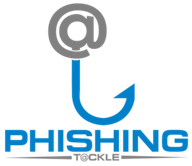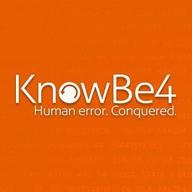Vulnerability Management
Best Practices for Vulnerability Management in Large Enterprises
In today's rapidly evolving digital landscape, large enterprises face increasing threats from cyber attacks. Vulnerabilities in systems and applications can expose sensitive data, disrupt operations, and damage a company's reputation. Effective vulnerability management is crucial to mitigate these risks and maintain a robust security posture. This article explores the best practices that large enterprises can adopt to ensure a proactive and comprehensive approach to vulnerability management.
The Importance of Effective Vulnerability Management
Vulnerability management is the process of identifying, assessing, prioritizing, and remediating vulnerabilities in an organization's IT infrastructure. In large enterprises, where the attack surface is vast and diverse, vulnerability management becomes even more critical. By implementing effective vulnerability management strategies, organizations can minimize the likelihood of successful attacks and reduce the potential impact on their critical assets and operations.
Automating Vulnerability Management for Cloud-Based Systems
With the rapid adoption of cloud computing, large enterprises often rely on cloud-based systems to store and process vast amounts of data. However, managing vulnerabilities in these environments can be complex and time-consuming. Automation plays a key role in streamlining vulnerability management processes for cloud-based systems. By leveraging automated tools and technologies, organizations can continuously scan and assess their cloud infrastructure for vulnerabilities, identify misconfigurations, and promptly apply security patches and updates.
Implementing a Comprehensive Vulnerability Management Program
Large enterprises should establish a robust vulnerability management program that covers the entire lifecycle of vulnerabilities. This program should include:
Effective Vulnerability Management Strategies for Critical Infrastructure
In sectors such as energy, transportation, and healthcare, where critical infrastructure is at stake, vulnerability management becomes even more crucial. Effective strategies for managing vulnerabilities in critical infrastructure include:
Conclusion
Large enterprises must prioritize vulnerability management to protect their sensitive data, maintain operational resilience, and safeguard their reputation. By implementing best practices such as automating vulnerability management for cloud-based systems, establishing comprehensive vulnerability management programs, and employing effective strategies for critical infrastructure, organizations can significantly enhance their security posture. Regular assessments, risk prioritization, patch management, continuous monitoring, and incident response planning are essential components of a proactive and robust vulnerability management approach.


4 Review
Efficiently reduce organizational security risk With hundreds of new software and OS vulnerabilities detected each month, reducing organizational security risk can become overwhelming. TOPIA's vulnerability management toolbox provides a smart prioritization and fast remediation with or without a security patch. All-in-one vulnerability management…
Read more about this company
4 Review


4 Review
SnaPatch is an add-on that utilises Microsofts System Centre Configuration Manager (SCCM) to patch users' virtual server fleets.


4 Review
wyBuild is a tool tool for managing versions of applications and make update patches, the software also includes a built-in translating editor.


4 Review
CybSafe measures and tracks security behaviour to improve security controls and awareness activities. Human error is a factor in more than 90% of security incidents. Most of them are avoidable. But they still happen because organisations focus on awareness training and phishing simulations. CybSafe helps you go further. By measuring 70+ security…
Read more about this company

4 Review
With Hook Security, you can run a fully automated security awareness training program that creates a positive and healthy security culture for companies, mitigating risk while entertaining employees. Run automated phishing testing, enroll your users in effective security awareness training courses, and generate reports that actually tell you how you're…
Read more about this company

4 Review
VigiTrust is a GRC (Governance, Risk, and Compliance) SaaS service provider enabling organisations to achieve, maintain and continuously monitor compliance with industry standards & laws such as PCI DSS, Vendor Risk Management, Third Party Assurance, EU GDPR, HIPAA, ISO 27001 etc.



4 Review
CFISA provides in-person and online security awareness training, made simple, for employees. Employee Cyber Security Training not only demonstrates that your business takes the confidentiality of its clients seriously, but they can be the difference between keeping your business up and running, or seeing it crippled by a cyber-attack or a lapse in…
Read more about this company

3 Review
Hoxhunt is a People-First Cybersecurity Platform that protects organizations and their employees from the risk of cyber attacks. Hoxhunt empowers employees with the skills and confidence to recognize and respond to attacks wherever they arise and provides security teams with real-time visibility into threats so they can react fast and limit their spread…
Read more about this company

3 Review
KnowBe4 is the world’s largest security awareness training and simulated phishing platform that helps you manage the ongoing problem of social engineering. The KnowBe4 platform is user-friendly and intuitive. It was built to scale for busy IT pros that have 16 other fires to put out. Our goal was to design the most powerful, yet easy-to-use platform…
Read more about this company

3 Review
Features of DarkSight: 1. Multiple applications patching in one single click. Just select the applications you want to update and click patch. DarkSight will do the rest. 2. Customize the solution to automate the remediation process as soon as a new vulnerability is detected on the network. 3. Not only it identifies Secure, Insecure, End of Life…
Read more about this company

3 Review
We detect your outdated software real-time and notify you with new software updates.


3 Review
ThreatAdvice's Learning Management System coaches your employees on the skills needed to avoid cyber crime. ThreatAdvice can assist in the creation of a cyber risk profile and will assess your organization's weaknesses using various tools including phishing simulations, network exposure scans, email exposure scans and more.


3 Review
PhishLabs provides 24/7 managed security services that protect against phishing attacks. PhishLabs protects organizations against phishing attacks that target their customers and employees.


3 Review
Our automated and continuous system and network scanner provides unparalleled coverage and comprehensive insight to enable you to detect vulnerabilities, assess risk, find blank spots and prioritize remediation for every asset, in every environment - public, local, cloud, IoT, container as well as OT and SCADA.


3 Review
NopSec Unified Vulnerability Risk Management (VRM) correlates vulnerability data with your IT environment and attack patterns in the wild to help you avoid false positives and find the threats that matter. Unified VRM prioritizes security vulnerabilities based on business risk and context with proprietary threat prediction models and cyber intelligence…
Read more about this company

3 Review
Vulcan Cyber has developed the industry’s first vulnerability remediation orchestration platform, built to help businesses reduce cyber risk through measurable cloud and application security. The Vulcan platform orchestrates and tracks the remediation lifecycle from scan to fix by prioritizing vulnerabilities, curating and delivering the best remedies…
Read more about this company

3 Review
HackEDU’s number one goal is to reduce vulnerabilities in code and we do that through best-in-class secure coding training. HackEDU offers interactive Secure Coding Training online to help software developers lower the risk of vulnerabilities in code. Unlike other offerings, HackEDU is a learning platform that uses real applications, real tools, and…
Read more about this company

3 Review
Cyber Security Simulation Platform. Cloud-based and fully customizable Cyber Range. Cympire significantly increases an organisation’s Cyber Resilience through continuous Training and Assessment of Security Professionals. Cympire's cloud native platform empowers clients to improve their response to real-life cyber attacks in a true to life environment…
Read more about this company- Vulnerability management software is a tool or a suite of tools designed to help organizations identify, assess, and remediate vulnerabilities in their IT systems and applications. It provides a centralized platform for scanning and analyzing the security posture of an organization's assets, prioritizing vulnerabilities based on risk, and guiding the remediation process.
- Vulnerability management software works by utilizing various techniques to scan and assess an organization's systems and applications for vulnerabilities. It may employ network scanning, vulnerability scanning, or agent-based approaches to gather information about potential weaknesses. The software then analyzes the collected data, maps vulnerabilities to known threats or exploit databases, and provides recommendations for remediation based on severity and impact.
- Using vulnerability management software offers several benefits, including:
- - Efficient vulnerability identification: It automates the process of vulnerability discovery, saving time and effort compared to manual assessments.

